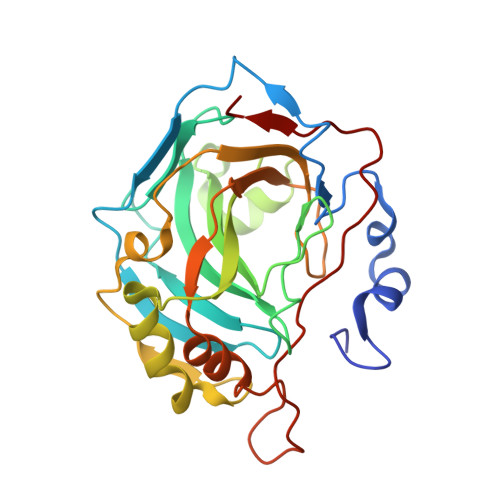Active-site solvent replenishment observed during human carbonic anhydrase II catalysis.
Kim, J.K., Lomelino, C.L., Avvaru, B.S., Mahon, B.P., McKenna, R., Park, S., Kim, C.U.(2018) IUCrJ 5: 93-102
- PubMed: 29354275
- DOI: https://doi.org/10.1107/S2052252517017626
- Primary Citation of Related Structures:
5Y2R, 5Y2S - PubMed Abstract:
Human carbonic anhydrase II (hCA II) is a zinc metalloenzyme that catalyzes the reversible hydration/dehydration of CO 2 /HCO 3 - . Although hCA II has been extensively studied to investigate the proton-transfer process that occurs in the active site, its underlying mechanism is still not fully understood. Here, ultrahigh-resolution crystallographic structures of hCA II cryocooled under CO 2 pressures of 7.0 and 2.5?atm are presented. The structures reveal new intermediate solvent states of hCA II that provide crystallographic snapshots during the restoration of the proton-transfer water network in the active site. Specifically, a new intermediate water (W I ') is observed next to the previously observed intermediate water W I , and they are both stabilized by the five water molecules at the entrance to the active site (the entrance conduit). Based on these structures, a water network-restructuring mechanism is proposed, which takes place at the active site after the nucleophilic attack of OH - on CO 2 . This mechanism explains how the zinc-bound water (W Zn ) and W1 are replenished, which are directly responsible for the reconnection of the His64-mediated proton-transfer water network. This study provides the first 'physical' glimpse of how a water reservoir flows into the hCA II active site during its catalytic activity.
Organizational Affiliation:
Department of Physics, Ulsan National Institute of Science and Technology, Ulsan 44919, Republic of Korea.

















